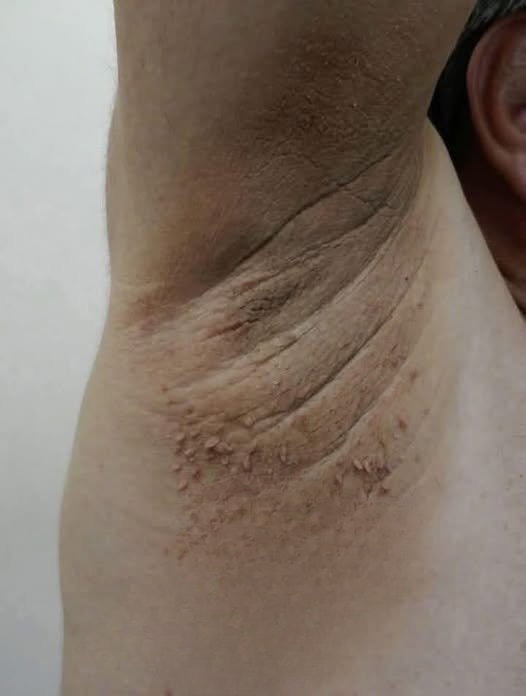Have you ever noticed dark, velvety patches of skin on the back of your neck or under your arms? While it might look like simple dirt or dead skin, these marks could actually be your body’s way of signaling a potential health issue that shouldn’t be ignored.
A Malaysian doctor, Dr. Hafizah Mohamed (@fiezanizmohamed), recently shared important health information online, explaining that these dark patches—often found on the neck, armpits, or groin—could be a condition known as Acanthosis Nigricans, which may indicate early signs of insulin resistance or developing diabetes.
“If you see these dark areas on your child’s or friend’s neck, don’t dismiss them,” Dr. Hafizah wrote. “This isn’t just a buildup of dead skin. It’s a sign to check your blood sugar levels and consult a doctor.”
What Exactly Is Acanthosis Nigricans?
Acanthosis Nigricans is a skin condition where certain parts of the skin become darker, thicker, and sometimes feel velvety to the touch. These patches most commonly appear around the neck, armpits, groin, elbows, or knees.
This condition is not harmful on its own, but it can be a visible clue to what’s happening inside your body. It’s frequently associated with:
-
Obesity
-
High insulin levels
-
Type 2 diabetes
-
Hormonal disorders
When found in children or teenagers, especially those who are overweight, it can be an early sign that the body is having trouble managing blood sugar.
Why Scrubbing Doesn’t Help
Many people mistake these dark areas for dirt and try to scrub them off—but that doesn’t work. The skin’s texture is caused by increased pigmentation and thickening, not surface buildup. In fact, excessive scrubbing can irritate the skin even more.
Dr. Hafizah, a member of #MedTweetMY—a network of healthcare professionals who share medical advice online—explained that the condition requires medical attention rather than cosmetic treatment.
When to See a Doctor
If you notice these changes, it’s important to:
-
Check your blood sugar levels or schedule a simple glucose test.
-
Consult a healthcare professional for a proper diagnosis.
-
Focus on lifestyle improvements such as a balanced diet, regular exercise, and maintaining a healthy weight.
Early detection of insulin resistance can make a big difference in preventing long-term complications like type 2 diabetes or other metabolic conditions.
How It’s Treated
While there’s no single “cure,” treatment focuses on addressing the underlying cause. This might include:
-
Managing weight through healthy nutrition and physical activity.
-
Adjusting any medications that might contribute to insulin resistance.
-
Using prescribed topical creams to help lighten and smooth affected areas.
In some cases, once the root cause (like high insulin levels) is managed, the dark patches may fade gradually over time.
The Takeaway
Those dark spots at the back of your neck or under your arms aren’t just cosmetic—they could be your body’s early alert system. If you or someone you know has noticed them, take a proactive step: check your blood sugar, consult a doctor, and make small but lasting changes toward better health.
Early awareness and action can prevent serious complications later on. As Dr. Hafizah emphasized, “These patches aren’t dirt — they’re a message from your body. Listen to it before it’s too late.”
